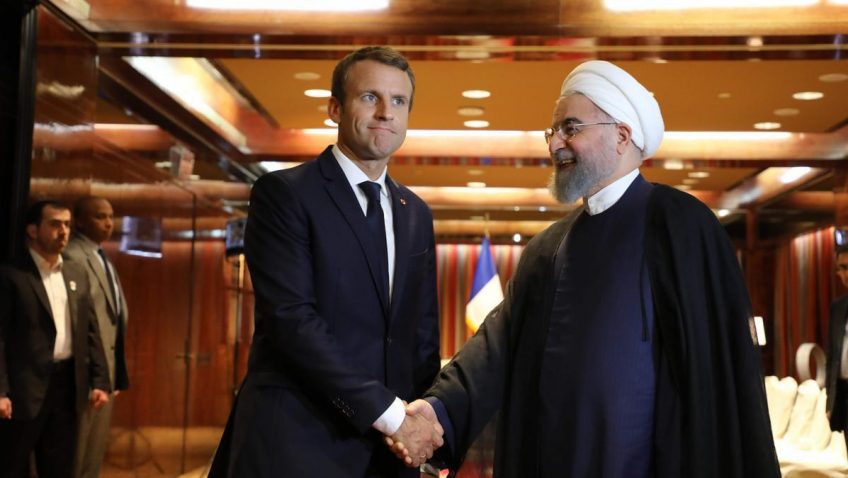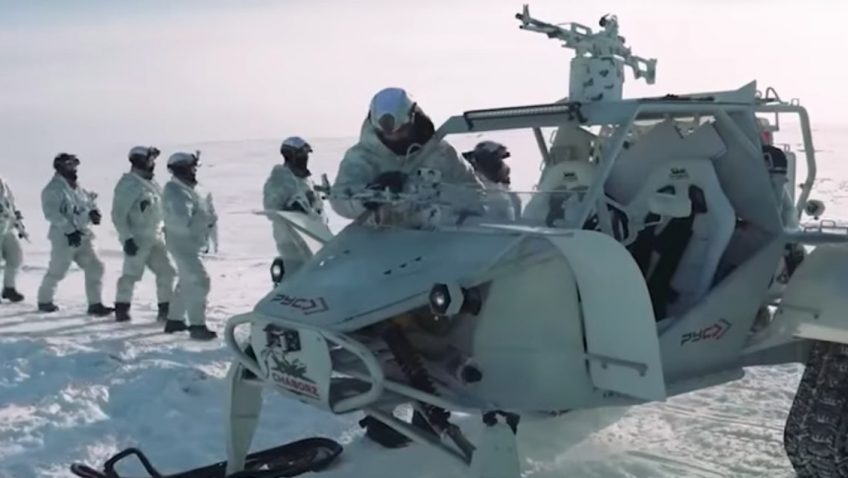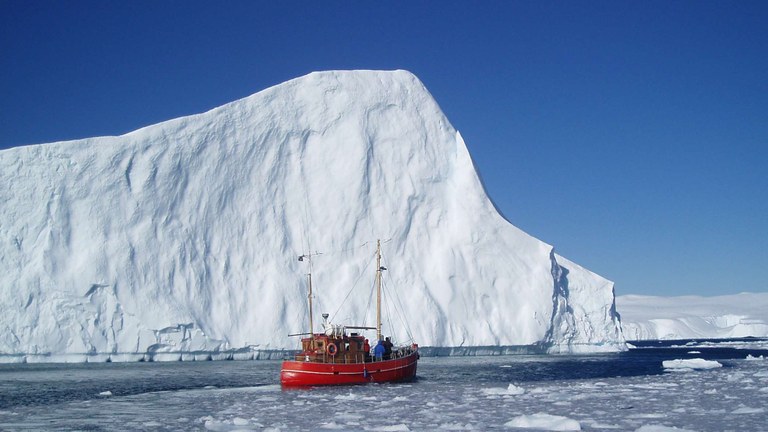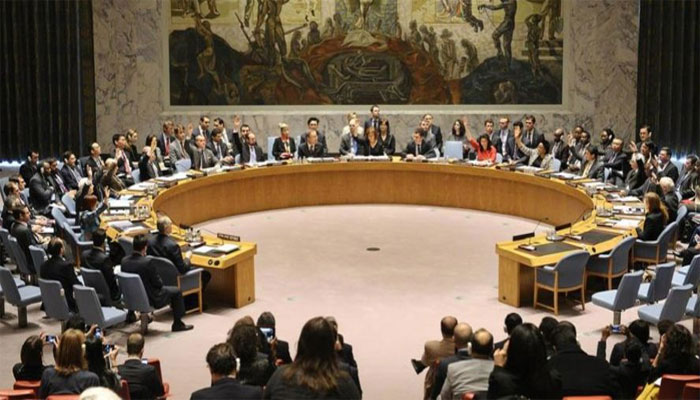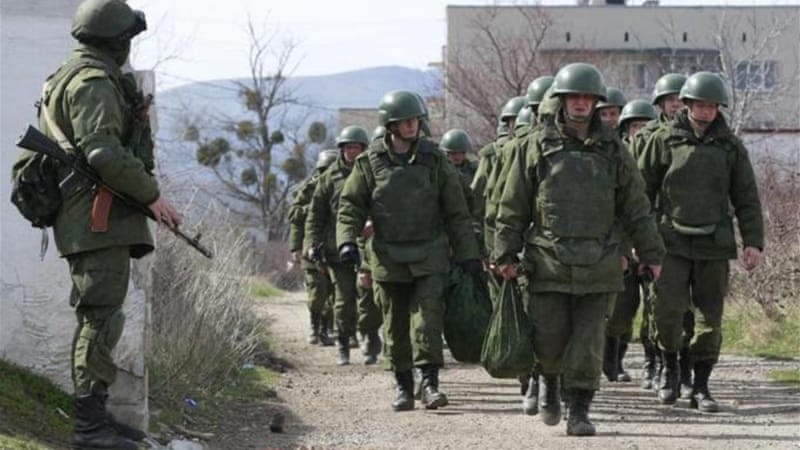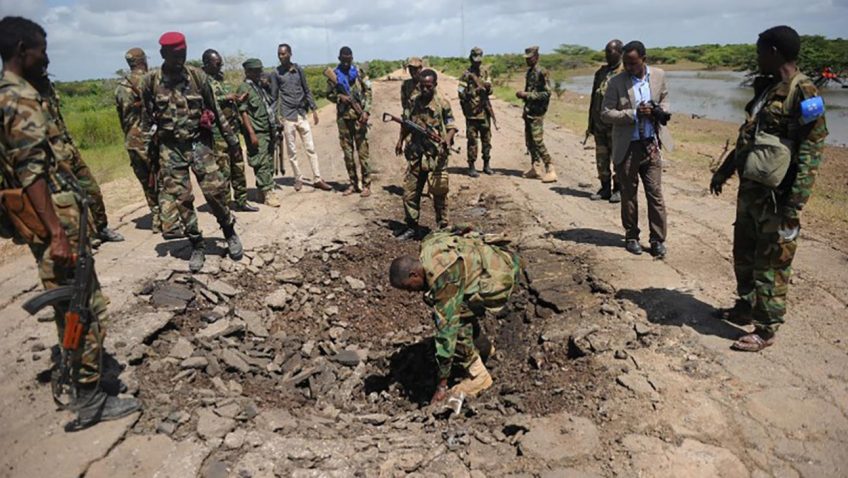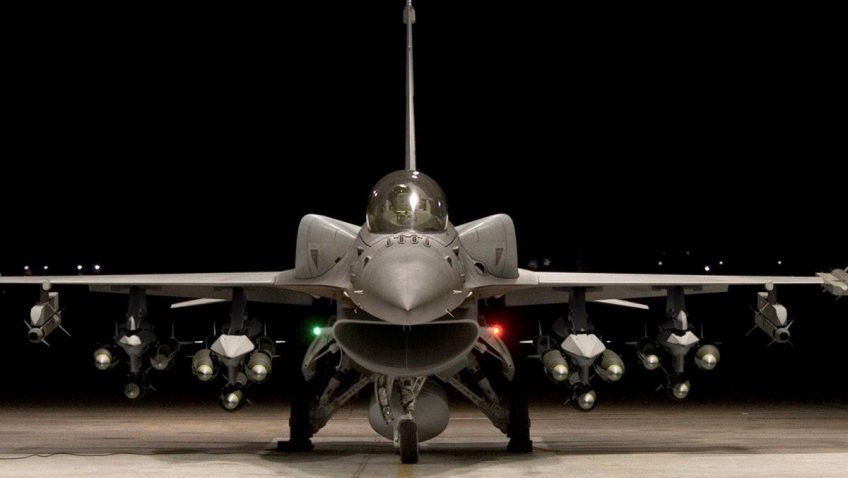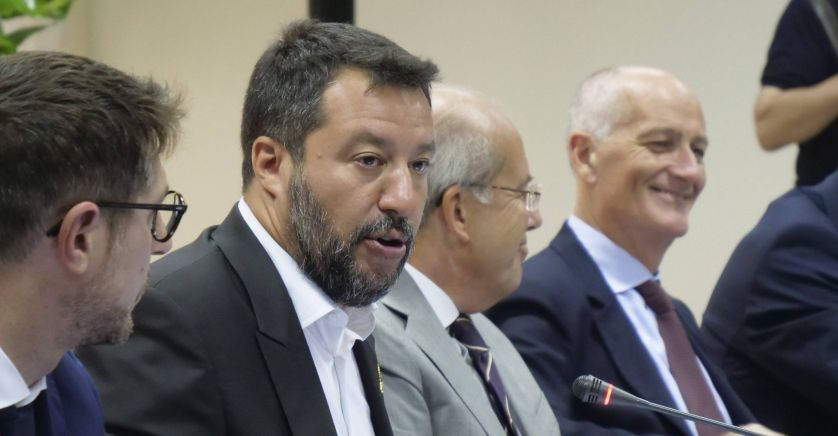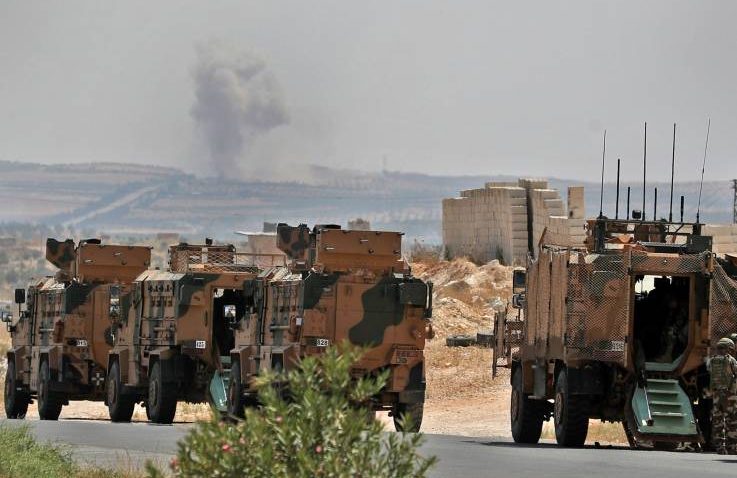The United States needs a new strategy. No one seems to be aware as to what its foreign policy objectives are, not even Washington policymakers themselves. As with any other country, it’s foreign policy is shaped by the geography the country faces, and, as a result, will follow a pretty predictable pattern in order to ensure it survival. The United States is no exception.
So, what are the geopolitics of the United States? What geographic obstacles does the country face? Well, in order to understand that question, one must examine the geography of the United States.
The United States is geographically blessed; every other world leader undoubtedly prays to god every night before going to bed asking God why their countries are not as geographically blessed as the United States. The United States lies between two massive oceans, offering the United States unobstructed access to the World’s markets.
This is good as it allows the United States to diversify its trading markets, thus making it more immune to global financial crises. In landlocked countries, trade is largely limited with their neighboring nations, and so, when their neighbors suffer economic decline, they have little choice but to suffer economic decline as well. The United States is not limited by this. While Europe may be on the decline, the United States, through its ports on the Pacific Ocean, can just change its economic focus to Asia, which is currently having an economic boom.
A second benefit to this is that it is virtually impossible to invade the United States, due to the sheer size of both the oceans. By the time any naval armada sails, the United States is fully prepared to withstand a naval assault. The only way to invade the United States is via Alaska, either along through the Aleutian Islands (which is what the Japanese did during WW2) or the Bering Strait.
This makes the United States a sea power rather than the land power, although the United States acts like a land power in many respects. As for its naval strength, the Pacific Ocean is more important to the United States to defend its heartland. This is due to the fact that the Pacific Ocean contains a series of small islets that can use as island hopping and making its way to the shore of the United States. That makes for the first geopolitical objectives of the United States: Maintaining dominance in the Pacific Ocean. To that end the rise of China has posed a direct threat to the security of the United States.
In terms of naval power, the United States can divide its naval forces into ten major fleets. Two fleets along the Atlantic Coast to guard the eastern Shore, one in Norfolk to guard the Mid-Atlantic Shore and Washington D.C, and again in Philadelphia to guard the North Atlantic and its urban core. One fleet in Key West to guard the Caribbean and Southern Coast of the United States. One fleet in Alameda to guard the West Coast of the United States. This leaves Four fleets to safeguard the Pacific Ocean: One docked in Pearl Harbor, Hawaii, one docked in Guam, one docked in Okinawa, and one docked in American Samoa.
But that leaves two fleets missing out of ten. Where are the other two fleets? Well, these two fleets are part of other geopolitical interests of the United States.
The first concerns Islamic terrorism. One of the major geopolitical security issues that the United States has is to combat global Islamic terrorism, following the terrorist attacks of September 11, 2001. The United States must maintain an eye on terrorist activity to make sure they do not attack the United States again. Now, foreign armies cannot defeat insurgent armies, as insurgencies are by their nature local. The United States can only intervene if the terrorists hold territory. Currently, Islamic terrorists openly control territory in Syria, Yemen, and Somalia.
Due to the containment of Al-Qaeda and other Islamic terrorists in Syria, I will exclude Syria from this and mention Yemen and Somalia, where the power vacuum and civil wars there have pledged the country into anarchy, letting Al-Qaeda and other groups fill in the vacuum. These two countries border the Gulf of Aden, in between the Red Sea and the Arabian Sea. This is a vital shipping lane, and as a sea power, one of the geopolitical issues of the United States is to enforce the global shipping lanes. So a fleet will have to be docked in the area to prevent Islamic terrorists from taking over the Gulf of Aden. Currently, there is a nearby fleet in Bahrain, but that will have to be moved to Djibouti, Djibouti is a more fitting place, as it currently sits at the base of the Gulf of Aden.
Now, the United States cannot do anything militarily in Yemen or Somalia to dislodge the terrorists group from the territory they control until the central governments of Yemen (Houthis, Southern Separatists, central government) and Somalia (Warring Clans, Somaliland separatists, Puntland separatists) to unite and for a new stable government that will not collapse take form in both countries. Only then will the situation on the ground be stable enough for the United States military to take out Al-Qaeda on the ground and retake all their territory. But once the territory has been retaken, the United States military must leave, otherwise they will end up doing more harm than good. So, the fleet will just be there as a mainly observing and escort fleet, but a United States fleet is still necessarily there at the moment, nonetheless.
The 10th fleet concerns the Arctic Ocean. Recent melting sea ice has opened a window into the arctic ocean that the Russians have capitalized on. The Arctic Ocean has always been the Achilles heel of naval strategy for the United States, as the ice meant that policymakers have afforded the luxury of ignoring the Arctic Ocean. But now by ignoring Climate Change, the United States has given the Arctic Ocean to the Russians.
The reason why this is so important can be shown by civilian flight map patterns. Flights from the Eastern United States to Asia have always flown over the Arctic Ocean as it is the shortest flight route. Should war break out between Russia and the United States, the Russians, through their two Arctic sea ports of Murmansk and Arkhangelsk, can cross the Arctic Ocean, land on the northern shores of Alaska and Canada, and thrust deep into the United States before the Pentagon had the chance to respond.
Now, this is where the geography of the United States also comes into play as Alaska and Canada serves as buffer zones to protect the heartland of the United States. Due to the large vastness of the area, any invading army coming in from the Arctic would be bogged down due to the tundra and taiga biome. However, the Arctic Ocean still acts as America’s soft underbelly, as a Russian Arctic Fleet could sail down to the North Atlantic and cut off the supply lines between Europe and the United States. The United States, now more than ever, needs an Arctic fleet.
What is even worse for the United States is that the United States only has one Arctic port, Barrow, AK (Utqiagvik by its indigenous Inuit name, and has recently been renamed to such, but I refer to it as Barrow for simplicity’s sake) and it is not big enough to host an Arctic Fleet. On top of that, there are no roads linking Barrow to the outside world, the closest road is part of the Pan-American Highway and links to the oil fields at Prudhoe Bay. The only way in and out of Barrow is through air.
There is only one port in Alaska big enough to host an Arctic fleet: Anchorage. And Anchorage is on the other side of Alaska from the Arctic. Nonetheless, that is where the Arctic Fleet sill be docked.
Aside from naval strength, there is another geographic advantage to the United States. Should the United States ever be invaded from the coast, both coasts are protected by two mountain ranges; the Appalachian Mountain Range and the Pacific Mountain Range. These two mountain ranges bog down any invading army.
This means that the United States will, by and large, never fight a war on it’s own soil into the future, and all of its wars that the United States has fought since the Spanish – American War have been on foreign soil. So, that leaves one question: What foreign countries/ foreign continents concern the security of the United States?
While oceans may give the appearance of buffer zones, more often than not, they act as unofficial border extensions. Nowhere is this more apparent than in the history of United States – European relations. Every major European Continental War has dragged into it the United States, in one form or another. This brings to it another geopolitical objectives of the United States: Keeping Europe at peace.
Aside from Europe, the two countries that border the United States also pose a strategic threat to the United States, as they can invade the flat terrain of the American heartland and render American defenses useless. To deal with this potential threat, the United States must treat each bordering country different.
To the north lies Canada, a country that is incapable of being geopolitically independent. Canada has too inland of ports, and is too far north to be a major port of global commercial interest, and so has to rely on a foreign power, and has little choice, except the United States, as the United States completely envelopes Canada, and 90% of Canada’s population lives within 100 miles of the United States border. However, this is no guarantee that Canada will remain under United States influence. When Canada was under British influence, the border with the United States was a source of tension and conflict. This brings up another geopolitical objective of the United States: Maintain influence over Canada.
To the South lies Mexico. Unlike Canada, Mexico has the capability to maintain geo-political independence. The United States therefore has little to no capability to exert geo-political influence over Mexico. This makes the border with Mexico one of the great sources of turmoil, as Mexico has a long history of political instability that, like Europe, the United States has a long history of getting dragged into, whether it wants to or not.
While the United States has strong leverage in negotiating when it comes to affairs between countries, it has little when it comes to civil wars. That includes Mexico, whose internal distress makes the United States – Mexico a frequent source of lawlessness. That brings up another geopolitical objective of the United States: Secure the Border with Mexico. To that end, Donald Trump’s Wall is nothing new in United States foreign policy objectives, fortifying the Mexican Border has been a United States foreign policy objective since the Mexican Revolution.
A third objective for the United States concerns the Caribbean. The Caribbean hosts one of the largest shipping lanes on the planet, due in large part to the Panama Canal. The Caribbean also contains a series of islands that stand right in the middle of the shipping route. If the Caribbean ever fell under an anti-American alliance, a full naval blockade can be implemented, and cut major US shipping from the Panama Canal, resulting a major plummet in the United States economy. This brings up another geopolitical objective of the United States: Maintain hegemony in the Caribbean.
There are two other elements about geopolitics, both concern internal dynamics of a country. One of the elements concerns navigable rivers, natural resources, and agricultural capacity.
Fortunately for the United States, the geography of the country also blesses it in this regard. The United States has a strong abundance of navigable rivers, particularly in the Middle of the country, with all of the rivers converging into the Mississippi River, coming down to the Gulf of Mexico, with New Orleans serving as its mouth. This brings up another geopolitical objective of the United States: maintaining control over the mouth of the Mississippi River.
Natural resources are also plentiful in the United States, with large amounts of coal, oil, natural gas, iron, gold, and silver, they can keep their economy afloat, so long as the country does not fall into the trap of the resource curse.
The United States is also equally blessed with agriculture, having more arable land than any other country. This has enabled the United States to produce vast amounts of corn, wheat, and soybeans, among others. Due to the large abundance of navigable rivers, vast amounts of arable land, a high percentage of natural resources, oceans providing access to the world markets, and mountain ranges protecting the interior, the United States became a world power with little effort, and can afford to rest easy.
Another element to geopolitics concerns how the geography and demographics of any particular country affect how the country spends its national budget on both military services as well as peacetime services. Discussed before was the navy, but there are still other military branches.
The main overall theme is that due to the may geographic fortunes that benefit the United States, the United States does not need to spend much money on its armed forces. While the navy is still a major part of the United States defenses, unless countries like the Philippines and Indonesia, the United States does not have a large amount of islands and archipelagos to patrol with a large fleet.
Also, due to its buffering by oceans, the United States does not need a large standing army. The only land rival to the United States is Mexico, and the geopolitics of Mexico do not clash with the geopolitics of the United States, so there has been little reason for the United States to consider Mexico a threat. Only real purpose of the army would be to guard the coasts of the United States from any invasions.
The oceans serving as buffer zones also means that the United States has little need for overseas military bases, especially as the nature of counterinsurgency warfare and counter-terrorism warfare means that these bases often do more harm than good.
Now, it is true that the United States is a member of NATO, but the truth is that ever since the fall of the Warsaw Pact in 1989, NATO has had little to no purpose, and Donald Trump’s calls for other NATO members to fit the bill in military budgets only prove that sooner or later, a post NATO- world will come. The most probable outcome is a Pan-European block to combat Russian influence, while the United States and Canada join Japan, South Korea, and Taiwan, of which the United States is treaty bound to defend in case of attack, in a Pan-Pacific block to combat China, alongside Australia, New Zealand, South Africa, Singapore, India, and Vietnam.
The breaking up of NATO into two separate alliance blocks may cause conflict in the North Atlantic Ocean, most notably the issue of Greenland, as the United States considers North America, of which Greenland is a part of, to be within its sphere of influence. To that end, Donald Trump’s recent comments about purchasing Greenland from Denmark are not that far-fetched, as the United States purchased Louisiana from France in 1803, Alaska from Russia in 1867, and the Virgin Islands from Denmark in 1917. However, the joint American – European concern over the Russian militarization of the Arctic Ocean, the inhospitable climate of Greenland, and its geographic location means that it is not a major strategic concern for the United States at the moment.
While the army is not a big concern for the United States, the air force is. Due to the vast size of the United States including both land and maritime air space, the United States needs a large air force to fully patrol the skies.
This brings up another element concerning the deployment of the United States armed forces. Because of the geographic isolation, it takes several months for the United States to mobilize its military and deploy them to the battlefield. For many other countries, it only takes hours. Now, such is the way of the United States, and thus, little can be done on that front. The United States can fix this problem by having an offensive military approach, but that can overextend supply lines and prove really unpopular. But it brings up another geopolitical objective of the United States: Compensate for the long period of mobilization.
As for internal security, the United States also enjoys great leisure. Unlike other countries, such as Russia, China, Iran, or most African countries, the United States has no ethnic minorities with separatist intentions, due in large part to the lack of national identity. As there is no such thing as an ethnic American, ethnic tensions are relatively uncommon, and following the US – Indian peace treaty of 1924, in which the United States government gave full rights and full citizenship to the Indigenous tribes of the United States, the chance of an Indigenous separatist movement is virtually non-existent. But it does bring up another geopolitical objectives of the United States: Maintaining demographic stability.
As for political insurgency, the United States does have political insurgents, but no more than any other country has. Therefore, there is nothing unique on this front pertaining to the geopolitical situation of the United States.
The large gap between the Atlantic Ocean and the Pacific Ocean brings up another geopolitical objective for the United States: Maintaining a sophisticated infastruce network. The United States must have the ability to quickly move troops from one part of the country to another in case of an attack.
So, the geopolitics of the United States centers around these objectives:
-Maintaining dominance in the Pacific Ocean
-Combat global Islamic terrorism
-Enforce the global shipping lanes
-Combat climate change
-Maintaining dominance in the Arctic
-Keeping Europe at peace
-Maintain influence over Canada
-Secure the Border with Mexico
-Maintain hegemony in the Caribbean
-Maintaining control over the mouth of the Mississippi River
-Compensate for the long period of mobilization
-Maintaining demographic stability
-Maintaining a sophisticated infrastructure network
And a United States foreign policy must center around these basic geopolitics.

